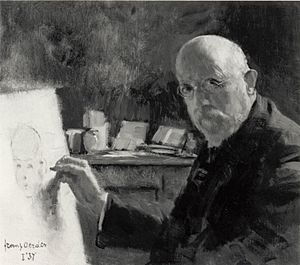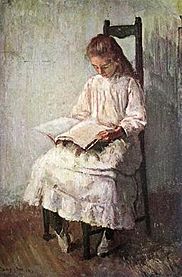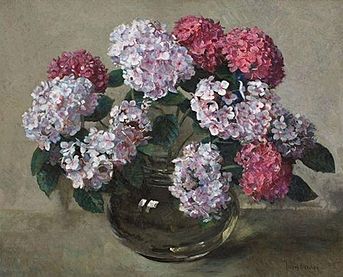Frans Oerder facts for kids
Frans David Oerder (born April 7, 1867 – died July 15, 1944) was a talented artist. He was born in the Netherlands but became a well-known South African painter. He created many beautiful landscapes, still-life pictures (like flowers or objects), and portraits (pictures of people). He also made etchings and lithographs, which are types of prints.
Contents
Early Life and Art School
Frans was born in Rotterdam, Netherlands. He was the youngest of seven children. His father, Johannes Carolus Oerder, worked for the city. At first, his father thought art was not a good career. But he agreed to let Frans train as a decorator.
From 1880 to 1885, Frans studied art at the Rotterdam Academy. He was very good and won the King William III Gold Medal and Bursary. This award helped him travel. He visited Italy and later studied in Brussels under another artist, Ernest Blanc-Garin. This was possible thanks to a small inheritance from his father.
New Beginnings in South Africa
In 1890, Frans followed his brother and moved to the South African Republic. At first, he worked as a house painter and decorator. He painted for a company called De Wyn & Engelenburg. When there wasn't enough work, he got a job with the Netherlands-South African Railway Company. He painted poles along the railway line that went to Delagoa Bay.
In the 1890s, Frans Oerder was one of only a few artists in South Africa with professional training. Other trained artists included Anton van Wouw and James Smith Moreland. In 1894, Frans started teaching art at the Staatsmeisjesskool, which is now the Pretoria High School for Girls. At the same time, he rented an art studio in Church Street East. He also earned money by drawing cartoons for newspapers. He even helped Anton van Wouw with some art projects. One of his art students who often visited his studio was the famous artist Pierneef.
In 1896, Frans took a painting trip to Zululand. After this trip, he held an exhibition of his artwork in Cape Town.
Artist During Wartime
When the Anglo-Boer War started in 1899, President Paul Kruger chose Frans to be the official war artist. This meant he drew and painted scenes from the war. His sketches and paintings from this difficult time are now kept in important museums. You can see them at the War Museum in Bloemfontein, the Africana Museum in Johannesburg, and the art collection at the University of Pretoria.
After the war, in 1903, Frans traveled and painted along the East African coast. He probably remembered his trip to Zululand. During this journey, he became sick with malaria. In 1905, he became a member of the South African Society of Artists. Things started to get better for him. He received several requests to paint landscapes and portraits, including one of General Louis Botha.
A New Chapter in Europe
Life was still hard in South Africa after the war. So, in 1908, Frans decided to return to the Netherlands. He traveled through Italy on his way. He first lived in Brabant, but later moved to Amsterdam. In 1910, he married a fellow painter named Gerda Pitlo.
Gerda loved painting flowers, and her interest influenced Frans. He started creating still-life pictures, especially beautiful flower studies. One of his paintings, Magnolias, became very famous. It was sold to the New York Graphic Society. Reproductions of this painting sold in record numbers, making it one of the most popular images ever. However, Frans did not receive any extra money (royalties) from these sales. Even though he was in Europe, Frans still remembered South Africa. He sometimes took on projects like designing covers for the weekly magazine, Die Brandwag. He also arranged an art exhibition in Johannesburg.
Final Years and Legacy
Frans and his wife finally returned to Pretoria, South Africa, in 1938. By this time, his artwork was very well-known and admired. As a special honor, the city of Pretoria allowed him to use the tower-room of the Pretoria City Hall as his art studio. Here, he painted several important portraits, including one of Jan Smuts. He now had time to travel and paint in different parts of South Africa, like the Cape Province, Natal, and the Northern Transvaal.
Frans became ill with pneumonia, and complications from it made him very weak. He passed away in Pretoria in 1944. Throughout his career, he painted a good mix of landscapes, portraits, and still-life pictures. His Dutch background always showed in his art.
Gallery





